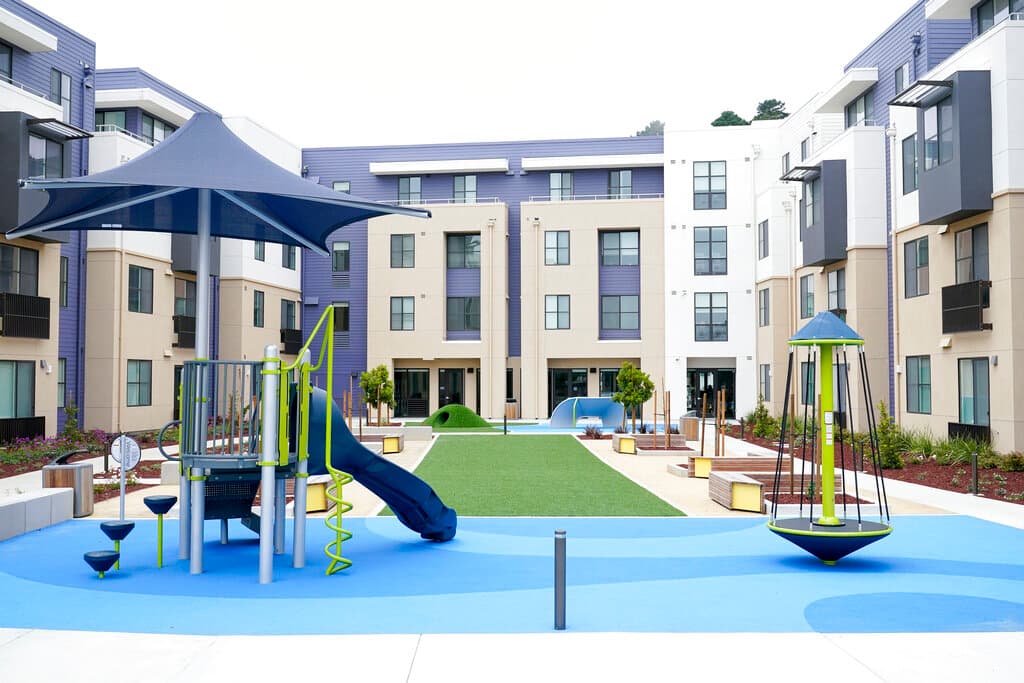The Ticket Out of Poverty: Fix Zoning
Friendships across classes help the poor, a new study shows. Changing zoning codes can make possible the kind of spontaneous friendships that arise in shared communities.

One does not have to be a social scientist to recognize the plausibility of a new study in the journal Nature that found that poor kids with wealthier friends wind up better off themselves. “Wealthy friends may be a ticket out of poverty,” is how the New York Times framed it.
The findings of the latest study by Harvard’s Raj Chetty, who has built a career on studies about upward mobility, won’t surprise anyone remotely familiar with American social history.
The idea that getting to know the affluent can help the poor rise above their station is as old, at least, as the 19th century Horatio Alger novels. Although largely characterized as the stories of those pulling themselves up by their bootstraps, in reality most of Alger’s stories involved poor boys taken under the wing of better-off patrons who show them the ropes and broaden their horizons.
In books such as “Ragged Dick,” “Risen From the Ranks,” and “Luck and Pluck,” virtuous behavior by lowly newsboys or shoeshiners attract the attention of the affluent. Just as the Chetty study suggests, guidance from above — as it were — opens a path for subsequent hard work to pay off.
That was possible in 19th century Manhattan, where many Alger novels begin, because the rich and poor crossed paths — a poor boy might return lost money or rescue someone who falls from a carriage, for example. But the possibility of cross-class friendship continued well into the 20th century — thanks to housing patterns on which we’ve subsequently turned our backs.
What’s the answer? Re-examining zoning codes to make possible the kind of spontaneous friendships that arise in shared communities. That will require the adoption of zoning for homes, including two- and three-family houses, that are less expensive simply because they’re smaller and income-producing. What won’t help is a push for public housing-style low-income projects that will spark resistance and not lead to either upward mobility or cross-class friendships.
There is historic precedent for such an approach. As America’s greatest historian of cities, Columbia University’s Kenneth Jackson, has observed, “unlike post-World War II suburbs, which are relatively homogeneous socio-economically,” earlier suburbs were “not restricted to a single economic class. There was diversity behind the posh Main Line stereotype. Even the richest communities were dotted with the small dwellings of those who furnished the support a grouping of large mansions required.”
What was the secret formula? It’s surprisingly simple, and based on the following approach: relatively small homes densely built on relatively small lots.
Today, similar neighborhoods — including newer versions — could be starter homes for our children, convenient homes for teachers, police and firefighters, and protection against the insularity of the social classes.
It’s an approach that we’ve not only forgotten, but one we have effectively banned. The ownership, agency, and wealth accumulation that comes with owning even a small home on a small lot was swept away first by public housing, where private asset ownership was a contradiction in terms, and then by exclusively single-family zoning.
Indeed, starting in the late 19th century, we embarked on efforts to reform, regulate, and replace the private housing market. In doing so, we have made obtaining affordable housing and building household wealth more difficult for the very people of modest means we intended to help. No one can build wealth in subsidized housing — where, by the rules, rent goes up when income does.
Mr. Chetty’s lesson can be this: the time is right to take steps to rectify the situation, in part by rediscovering a lost formula. We need poor sides of town — small homes and small lots that owners of modest means can afford — that can serve a great many municipalities well.
How do we get there?
Let’s start with what we should not do: “Affirmatively Furthering Fair Housing.” This Obama-era idea involves subsidized apartments set aside for racial minorities in affluent zip codes. Why isn’t this a good idea?
Because it’s a program guaranteed to create backlash. Those who have worked their way up, including Black and Hispanic homeowners, will resent those who have not scrimped and saved but reaped the same rewards they did. And it puts alleged beneficiaries in the awkward role of being charity cases. Worse still, it sends the message that the decisions that enable upward mobility — marriage and saving — can be bypassed.
Instead, local community planning boards across the country need to embrace that a range of housing types can make for a better community. When kids, and their parents, cross paths spontaneously — through youth sports, school parent nights and church activities — the kind of friendships Mr. Chetty has shown to have value can sprout.
It’s always tempting to jump on social science findings to justify a new social program. It’s a temptation to resist. Instead, we need to rediscover an old formula on which we’ve turned our backs.

